The world of movies and television offers an incredibly broad landscape. Not only can stories be told in a wide assortment of genres, styles, and mediums, but the undergirding values and themes of stories will also vary greatly depending on the storytellers and their cultural backgrounds. Different cultures can have incredibly unique approaches to crafting a narrative. Perhaps one of the most distinct contrasts in the approach to story appears between American animation and that of the Japanese—that is, anime.
On average, Americans aren’t very familiar with anime. The style of animation and the content of the narrative look nothing like the Western media that is so familiar to us. Character designs in animated American films are usually not terribly exaggerated, and when they are, the characters are made to look cute and child-friendly. In contrast, characters’ features in anime can be terribly unrealistic, with extra-long limbs and sharp, pointed faces. Some Americans may look at anime and think, “That looks weird! I don’t want to watch that.” However, a great many of these foreign creations have very powerful messages to convey, just like many of our own—if not more.
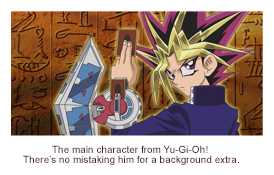
The most noticeable and distinct trait of anime is its visual style. Large eyes, small noses, and unnaturally colored hairstyles define many of its characters. For instance, protagonists frequently sport bright blue, green, or purple hair. But it all has a purpose. Anime operates on exaggeration of the most expressive parts of a person in order to communication as much emotion as possible. Unusual hair signifies the characters we should focus on. The eyes and mouths of the characters will wildly change size and shape to reflect the feelings of the characters. Meanwhile the noses, being mostly stationary, are hardly defined at all. This may seem far from “realistic” design, but a deeper realism of human emotion comes across in very clear, relatable, and engaging ways as a result. One cannot mistake a character’s rage, sorrow, or enthusiasm when every detail of their person emphasizes the emotion they feel.
But anime isn’t only distinct for its appearance. The narrative patterns frequently used in anime bear strong distinctions from Western plots and pacing. American storytelling frequently moves at a fast pace and uses very solid, obvious plot points. Our narratives are expected to jump from buildup, to climax, to resolution without wasting time, all the while making these stages very clear to the audience. In contrast, the sequence of events in Japanese storytelling may move more gradually, weaving from point to point without necessarily suggesting the end goal until right when the ending is actually found. The viewer may be kept in the dark for long periods, with no clues as to what stage the story is in at a given point. Western viewers may perceive this pacing as slow or confusing.
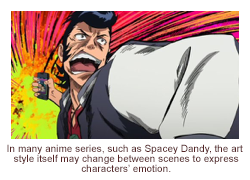
American stories also like to give clear direction from the start regarding their ultimate themes. A show like Family Guy is wholly comedy centered, expressing this from the beginning and following through with the same themes every episode—the family struggles with their dysfunctions, but their conflicts are always resolved by the end of the episode, often in silly or absurd ways. While each episode may vary in its content, the show maintains a degree of predictability in its humor style, something which the viewer may find comfortable and familiar.
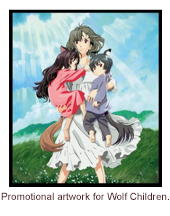
By comparison, consider the anime Wolf Children. This is a popular movie about, just as it sounds, two half-wolf kids. The story appears lighthearted from the beginning. Hana, normal young woman, meets a half-wolf man and begins to fall in love. The initial conflict centers on Hana trying to decide whether she can pursue a serious relationship with this man. She agrees to marry him, and gives birth to two children. However, the film takes a dark turn when her husband is very suddenly killed, leaving her alone to raise his two werewolf children without guidance. From there it appears unclear whether this story will be one of joy or heartbreak. Some happiness does return to the plot as Hana slowly learns how to care for her children, but the viewer is has no assurance that another tragedy will not strike. This unpredictability keeps the audience on their toes until the film finally reaches its conclusion, which again mixes hopeful and wistful themes as the fate of Hana’s children looks optimistic, but uncertain.
Another marked distinction of anime is its use of setting. Western cartoons tend to keep to familiar realms; even “wacky” shows like The Simpsons still take place in a world that mirrors our own. The technology, merchandise, politics, and other details of the world are just like as ours. Most often, these shows stick to the “slice of life” setting, where the conflicts of each episode are familiar social squabbles within the family or workplace. By contrast, Japanese animation likes to explore fantasy worlds which may have very little to do with our modern era or society, and their protagonists go up against darker dangers. The characters may battle inside giant robots, perform magic, or embark on epic quests with large-scale goals, such as saving the world from destruction. Attack on Titan, one very popular example, is about a desperate world where human society is all but wiped out by a race of merciless giants. The protagonists are trained warriors whose only goals are to destroy these enemies and bring some measure of safety to their loved ones. This is quite a far cry from The Simpsons or American Dad.
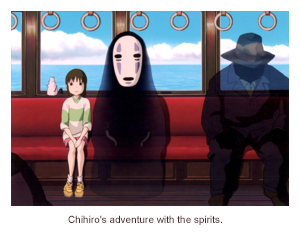
Another great example of anime’s variety can be found in the films created by the acclaimed Studio Ghibli, which demonstrate the many unusual and unique places that anime can invite us to visit. Spirited Away, for instance, follows the adventures of Chihiro, a young girl who falls into a strange dimension populated by spirits from Japanese folklore. Her parents are trapped in this world as well, and she must quickly learn how to navigate this foreign culture so that she may save them. Chihiro takes on a job as an assistant in a bathhouse, fulfilling duties to the spirit folk while slowly gathering information about what has happened to her family. She assists many lost and wounded spirits who come to the bathhouse seeking healing or care, and the friends she makes become the key to her rescue.
Another film by this studio, Kiki’s Delivery Service, takes place in a society a little more similar to our own, with technology resembling that of the mid-1900s. However, witches also exist in this world, and as a young witch Kiki must leave her small town to embark on a quest to practice her craft. However, she soon finds that not everyone in the outside world is ready to accept her kind. Using her flying broom, she starts a delivery service hoping to fit in. But when things do not always go as planned, Kiki loses hear t and even begins to lose her magic. She must then look inside herself to find her true desires, and she realizes that her worth comes from much more than being able to fly.
As fantastical as some of these stories may seem, however, they still express ideas and experiences which many of us can relate to. Spirited Away and Kiki’s Delivery Service, as full of magic as they are, still prove to be simple tales of growing up at heart. Spirited Away ultimately shows how young Chihiro, a lonely child full of fear and uncertainty, can muster her courage and use the love she has for others to persevere. Chihiro lacks confidence when her story starts, but through lending her aid to those around her, regardless of who or what they are, she learns how to create strong friendships and face adversity with patience and kindness. Similarly, the titular Kiki at first believes that the most important thing she can do is fit in. She feels alienated from the society around her because she lacks their nice clothes or fancy possessions, and she believes that her magic is the key to making others like her. But when that magic fails, she discovers that her friends still love her and are ready to support her completely. Kiki only regains her powers when she realizes that her value does not come from her talents, but from who she was all along. While both Kiki and Chihiro may experience fantastical situations that we will never see in our own lives, we can all relate to the underlying messages of these films—the struggle to find ourselves and forge meaningful connections with those around us.
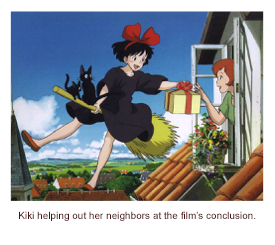
Ultimately, the stories presented in Japanese animation are simply that. Stories. To the Western eye they may at first appear odd or unreal, but it would be a great loss to pass these narratives off simply because the style is different from our own. The feelings and experiences presented in these animations are just as real and moving as what can be found in our own film and television. When forming these works, the creators know how to use their unique art style, pacing, and themes to best communicate ideas and emotions to the viewers, regardless of the audience’s culture or background. The readiness of anime to explore all sorts of different worlds and characters truly offers some of the most engaging and emotional narratives.
